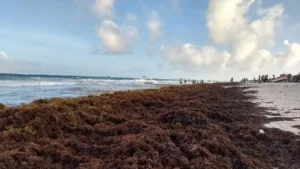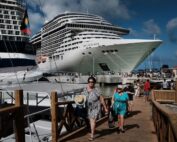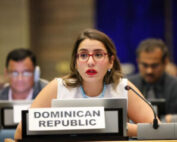From sargassum to the blue economy: a sustainable opportunity for the Greater Caribbean

In recent years, widespread sargassum blooms have become a growing concern in the Greater Caribbean. Once a symbol of marine biodiversity on the high seas, this macroalgae now covers beaches from Barbados to Mexico, threatening tourism, livelihoods, ecosystems, and, crucially, public health.
In recent years, communities across the region have reported spikes in respiratory illnesses, especially among vulnerable groups such as the elderly, children, and people with asthma or chronic obstructive pulmonary disease (COPD). In Martinique and Guadeloupe, studies have linked chronic exposure to sargassum emissions to headaches, nausea, eye irritation, and even pregnancy complications such as preeclampsia and gestational hypertension. The burden falls disproportionately on coastal communities, which often lack access to adequate healthcare services and rely heavily on the sea for their livelihoods.
Despite the magnitude and severity of the problem, the health impacts of sargassum remain a neglected topic on the global climate and health agenda. Most discussions focus on heat stress, vector-borne diseases, or food insecurity; however, the toxicological and environmental implications of sargassum are largely underresearched.
The story of sargassum, however, is not just about an emerging danger, but also about an opportunity. Instead of waiting for sargassum to rot on shorelines and pollute the air, several Caribbean states are exploring sustainable harvesting and pre-processing techniques to mitigate this issue. When harvested before it decomposes, sargassum can be transformed into high-value products: bioplastics, fertilizers, animal feed, cosmetics, and even biofuels.
Companies in the Dominican Republic, Mexico, and Barbados are already implementing these innovations on a pilot basis. Early harvesting also helps preserve the algae’s bioactive compounds, which show potential for use in natural pharmaceuticals and functional ingredients, opening new doors for healthcare innovation and drug discovery.
This approach is fully aligned with the vision of a fair blue economy: one that harnesses marine resources without compromising the ecosystems or communities that depend on them. If approached carefully, sargassum harvesting could boost coastal employment, support local entrepreneurship, and introduce new industries in biotechnology and green manufacturing.
We have an opportunity to foster environmental literacy and climate resilience throughout the region. School programs, training centers, and public education campaigns can use the sargassum problem to teach about marine biodiversity, the impacts of warming seas, and the urgent need for regional cooperation.
Equally important, it can help people establish deeper connections between climate and human health, a relationship that is often overlooked. When people see how rising ocean temperatures and ecological disruption can translate into respiratory illnesses, pregnancy complications, and mental distress, climate change becomes a personal and tangible issue. By fostering this awareness, the Caribbean can help lead a shift toward more integrated climate and health policy solutions.
The Association of Caribbean States (ACS) plays a pivotal role in advancing regional cooperation on sargassum management through its SARGCOOP II program, which promotes shared monitoring and sustainable reuse strategies. While health integration has been largely absent from these efforts, the ACS has begun to address this shortcoming by supporting discussions on the implementation of a Caribbean Air Quality Monitoring Network to address associated health impacts. The recent coordination meetings in Guadeloupe could serve as a platform to expand this multisectoral approach and include ministries of health and public health experts. In a virtual address, ACS Secretary General Noemí Espinoza Madrid emphasized the urgent need for regional cooperation on sargassum and reaffirmed the organization’s commitment to cross-border collaboration.
Addressing the sargassum crisis requires a transdisciplinary approach that brings together oceanographers, climatologists, public health experts, economists, physicians, tourism sector stakeholders, community leaders, policymakers, and innovators to jointly develop comprehensive solutions that protect ecosystems, reduce health risks, sustain local economies, and preserve the Caribbean’s vital tourism industry. The Greater Caribbean is uniquely positioned to lead on this front. It has faced the worst of the sargassum crisis and now has the tools to turn it around if we prioritize health, equity, and ecological sustainability.
Let’s imagine a future where the same algae that once choked our coasts become a symbol of innovation and renewal. To achieve this, we must act together, guided by transdisciplinary science, solidarity, and a deep commitment to the well-being of our people and the oceans.
Avriel Díaz is Executive Director of the Global Council for Science and the Environment
Source: Dominican Today

MORE NEWS














